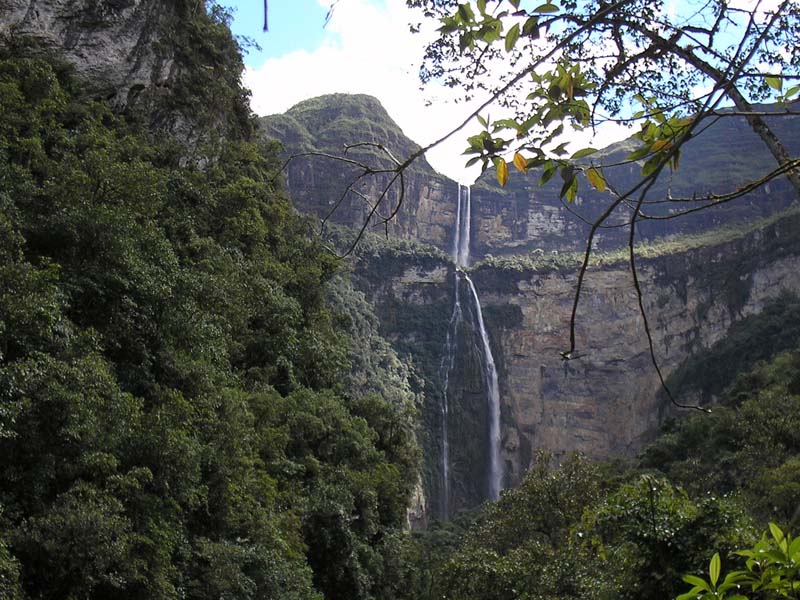The Gocta Catarata, located in Peru, is one of the tallest waterfalls in the world. It is also one of the most recently discovered Waterfalls of South America and publicized. The waterfall has been well known by local residents of the region and was visible from the native village of Gocta but was not documented by the world’s geographers. According to legend, the locals did not talk of the waterfall because of fear of angering a mermaid that lived within the waters.
In 2005, a group lead by Stefan Ziemendorff officially documented the existence of the waterfall in the remote regions of the Chachapoyas province. The waterfall was then mapped and attempts were made to document its dimensions. The process of documenting the height of the waterfall is incomplete and there are still controversies associated with where this waterfall ranks among the tallest waterfalls of the world.
Gocta Catarata falls in two segments. Ziemendorff measured the total height of the waterfall at about 2,500 feet or 770 meters. Those measurements would rank Gocta as the third tallest waterfall but have been disputed.
Because of the remote location of the waterfall, visitation is limited to dedicated backcountry travelers. The Peruvian Government is attempting to improve the conditions and exploit the waterfall as a tourist destination. This includes lodging and trails within sight of the Gocta Catarata.
Even the best lodgings in the area are at altitudes exceeding 7,500 feet or 2,200 meters. These locations are still below the base of the waterfall and involve an uphill hike to the actual waterfall location. The high altitude means thinner atmosphere and can cause hikers to tire quickly. The high altitude also means that the weather can be unpredictable and high clouds can conceal parts of the waterfall even when viewed from the base of the falls.
The province of Chachapoyas has a population of about 50,000 people scattered over 3,300 square kilometers or 1,300 square miles. The region is known for its local populations of indigenous people who maintain cultures that are representative of the local civilizations prior to the arrival of European populations in the 1500s.
The region supports a small tourist industry that does include Gocta Catarata. However, the economy of the province is principally based on agriculture.





